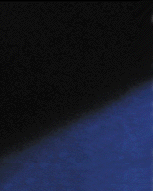|
|
|
An Interview with Sue-Jung Cho, the Chairman of
Sue-Jung Hanji Painting Association |
| Let people in the world know about Korea's antique style painting, Hanji Painting. Hanji is a traditional Korean paper made from mulberry tree. Hanji is soft and strong, aromatic and well-ventilated. It is also light but hard to tear off. This is Korean traditional art paper. |
|
Hanji has its own unique and flexible characteristics. Just like we get different appreciation when we see oil paintings and watercolours, Hanji Painting can reflect differently on us depending on how the paint is applied to the Hanji paper.
Since the old days, Hanji has played a very important part in Koreans' lives. It was one of the most important household goods in a Korean household, used not only for documents but also to cover traditional style doors.
People have used Hanji much less since 1970's when industrial paper started to be imported into Korea.
However, there is a person who has remarkably turned this around, and made Hanji a traditional item again. Sue-Jung Cho is the one who first introduced Hanji Painting to Korea as a pioneer in 1985. She is now the chairman of Sue-Jung Hanji Painting Association, and she has welcome thousands of associate members and pupils. The artist answered our questions:
Q: What made you start Hanji painting?
A: One day I saw Japanese artists using Hanji paper, and it gave me the idea of
restoring the place of Hanji paper into art, thus reviving Korean traditions.
Q: Have you ever studied or learned Hanji Painting?
A: I studied this art in Japan 21 years ago.
Q: We understand that Japan practices Hanji Painting as well. Is there any difference between Japanese and Korean Hanji Painting?
A: Not particularly. There isn't much difference between them, but the quality of Korean paper, Dak Paper, is much better. This fact is well known all over the world.
Q: How long does it take to paint a piece of Hanji Painting? And, how much is Hanji Painting worth?
A: It depends on the painting. Actually it takes longer to get the concept of painting than to really work on it. The prices of a painting range from 10,000 wons to hundreds of wons, once again depending on the quality of the painting.
Q: Where can I learn Hanji Painting?
A: There are some Hanji Painting courses at the Munwha Center, the District Office Welfare Center, and also the Social Education Center within any University.
Q: When was the hardest moment you have gone through?
A: I started from nothing so everything wasn't always going well in the beginning.
However, I overcame these hard times thanks to the joy I was getting out of keeping our own traditional painting alive.
Q: How do you plan to get Hanji Painting known? What have you achieved so far in that sense?
A: We have had Hanji Paintings exhibitions in several countries including Germany, the Philippines, Bali, Manila, etc, which proved to be very successful. Now we are working on an exhibition that will take place in Germany in November this year and that will feature Hanji-painted paper craft.
|
|
|
|
| 25-10-2001 |
|
|
|
|

